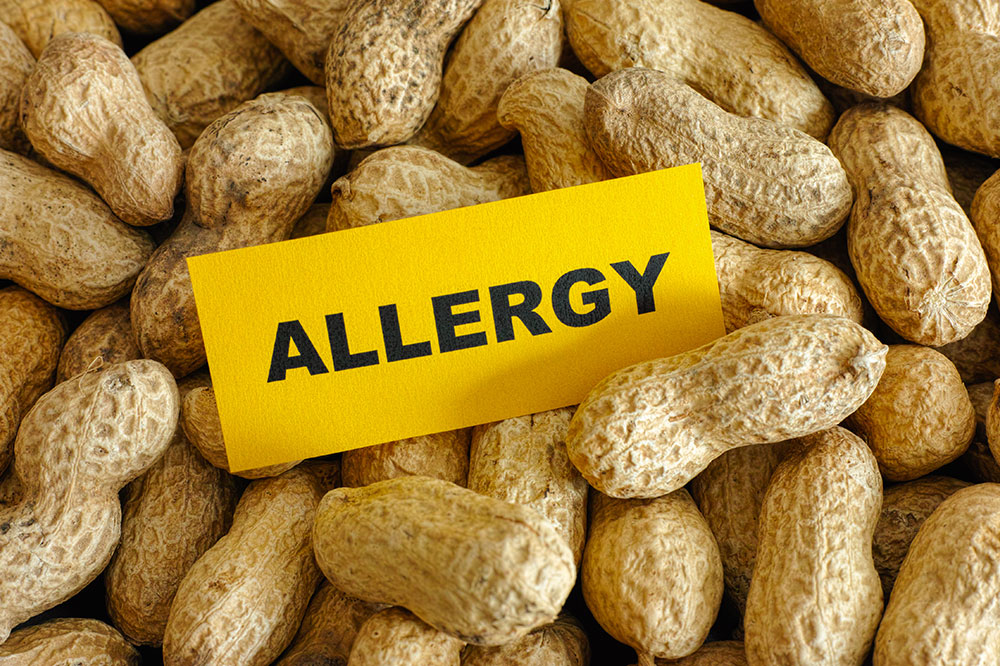Understanding the Top 5 Most Common Food Allergies and Their Effects on Health
This comprehensive article explores the top five food allergies—peanuts, milk, wheat, shellfish, and soy—and their impact on health. It covers symptoms, management strategies, and recent advances in treatment, emphasizing the importance of awareness and safety measures for allergy sufferers. Understanding these common allergens is essential for effective management and improving quality of life. The article provides detailed insights into each allergen's characteristics, risks, and preventive approaches, helping raise awareness and promote safe eating practices for sensitive individuals.

Understanding the Top 5 Most Common Food Allergies and Their Effects on Health
Food allergies are a significant health concern affecting millions of individuals worldwide, cutting across all age groups, from infants to seniors. These allergic reactions occur when the immune system mistakenly identifies certain food proteins as dangerous invaders, even though these foods are typically harmless to most people. The immune response can trigger a wide array of symptoms, ranging from mild skin irritation to severe, life-threatening conditions such as anaphylactic shock. Recognizing and understanding the most prevalent food allergies is essential for managing risks and ensuring safety for individuals with sensitivities.
While numerous foods can provoke allergic responses, research indicates that five particular categories are responsible for the majority of allergic reactions globally. These common food allergens include peanuts, milk, wheat, shellfish, and soy. Each of these has unique properties, typical age of onset, reaction severity, and management strategies. In this comprehensive article, we delve into each of these key allergens, explore their impact on health, and discuss current approaches for diagnosis, treatment, and prevention.
Peanuts
Peanut allergy stands out as one of the most common and potentially severe food allergies worldwide. Individuals allergic to peanuts may experience reactions ranging from mild skin irritation and digestive discomfort to more serious symptoms like swelling of the throat, difficulty breathing, and anaphylaxis. The severity of peanut allergies makes it a major concern in public health, especially given the prevalence of peanut presence in numerous snacks, baked goods, and processed foods. People with a family history of allergies are at a higher risk of developing peanut sensitivities, and strict avoidance, along with emergency preparedness (like carrying epinephrine auto-injectors), is essential for those affected.
Milk
Milk allergy, predominantly seen in infants and young children, is characterized by an immune response to milk proteins such as whey and casein. Unlike lactose intolerance, which involves digestive issues due to enzyme deficiencies, milk allergy involves an immune-mediated response that can cause hives, vomiting, diarrhea, and in severe cases, respiratory distress. Fortunately, many children outgrow milk allergy as they age, but some may carry it into adulthood. Managing milk allergy involves strict avoidance of dairy products and carefully reading labels to prevent accidental exposure. Alternatives such as plant-based milks (soy, almond, oat) are often recommended for those who are allergic.
Wheat
Wheat allergy differs from celiac disease, although both involve reactions to wheat components. Wheat allergy frequently manifests in childhood, with many children outgrowing it by adolescence. However, some adults remain sensitive to various wheat proteins, which can trigger symptoms like nausea, skin rashes, swelling, and even anaphylaxis in severe cases. Avoidance of wheat and related gluten-containing products is key to managing this allergy. For individuals with wheat allergy, it's essential to be cautious about cross-reactivity with related grains and to carefully navigate food choices in a world where wheat-based ingredients are ubiquitous.
Shellfish
Shellfish allergy is often a lifelong condition that tends to develop during adolescence or adulthood, though it can also be present earlier. Proteins found in crustaceans like shrimp, crab, and lobster, as well as mollusks such as clams, oysters, and mussels, are common triggers. Reactions can vary from mild to severe, with some individuals experiencing anaphylactic responses even from incidental contact, inhaling vapors during cooking, or cross-contamination. Because shellfish allergies tend to be persistent, strict avoidance and awareness in dining and food preparation are critical. Quick access to epinephrine is recommended for managing accidental exposure reactions.
Soy
Soy allergy is increasingly common, particularly among infants and young children, although it can also develop in adults. Symptoms are generally mild but can include skin rashes, hives, stomach cramps, and, rarely, more serious reactions. Soybeans and soy-derived ingredients are common in processed foods, baked goods, and soy-based products, making avoidance sometimes challenging. As with other food allergies, meticulous label reading and dietary choices are vital. For some individuals, soy allergy may decrease over time, but others might require lifelong avoidance depending on their sensitivities. Clinical testing and allergen management strategies help maintain safety and health.
In addressing these allergies, two primary approaches are noteworthy: first, the importance of early diagnosis through skin prick tests, specific IgE blood tests, and food challenge tests; and second, the advances in immunotherapy treatments that aim to desensitize patients over time. Additionally, emergency preparedness, such as carrying epinephrine auto-injectors, is crucial for severely allergic individuals. With ongoing research and increased awareness, many people with food allergies are now better equipped to manage their conditions and lead healthy, fulfilling lives.





